Greenland’s Only Travel Guide You Need For A Great Trip in 11 Easy Steps
- Destinations Europe
Cruisit Team
- September 27, 2022
- 0
- 4902
- 73 minutes read
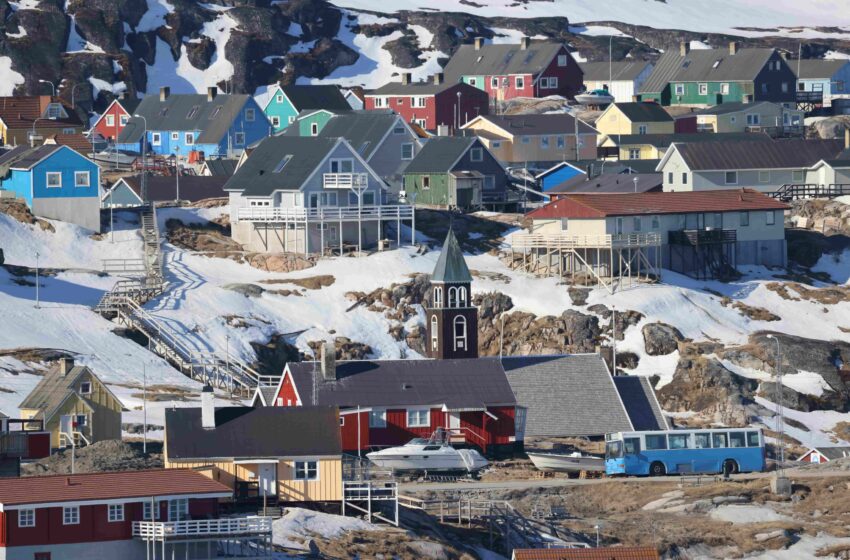
Greenland’s Background
The first inhabitants that evidence uncovered were the Inuit people who are claimed to have arrived to Greenland around 3000 BC. The Saqqaq people who lived there around 2,500 to 900 BC were the original inhabitants. Up to the arrival of the Dorset people in c. 500 bc, Greenland remained uninhabited. Around the first century AD, they called Greenland home. The arrival of the Thule people to Greenland is dated to the 10th century. At the close of the 10th century, the Vikings set sail for Greenland. Erik Thorvaldsson, known as Erik the Red because to his red hair, headed the group. Around the year 982, Erik made his maiden voyage to Greenland. It is reported that Erik the Red named the nation “Greenland” in an effort to entice people to settle there. Around the year 985, Erik, a leader of the Vikings, brought the first colonists to Greenland. Twenty-five of his ships set off, but only fourteen returned. The Vikings were able to establish permanent settlements in Greenland because the weather was much better than it is now. Two Viking colonies were established in Greenland, one in the western part of the island and another in the eastern part. At one point, there were more than 3,000 Europeans living in Greenland. Greenland had its first bishop in 1126, and Norway claimed it in 1261. Then, in 1380, Denmark annexed Greenland and Norway became one unified country.
With the change of the Earth’s climate, a once warmer Greenland enabled a viking settlement to take place. However, the Earth cooled in the 14th century, which led to these settlements to perish by the 15th century. Explorers like Martin Frobisher, and John Davis made contact with the island in the late 16th century. Shortly after, European whalers began making their way to Greenland in the late 17th century. By the 18th century, missionary Hans Egede traveled to Greenland in 1721 to convert the Inuit, with some of the Europeans remaining there. Hans established Godthab in 1728, now known as Nuuk. Meanwhile, by 1729, the Danes reestablished their authority over Greenland. The first to cross Greenland’s inland was Fridtjof Nansen on an expedition in 1888. During the world war, when Germany controlled Denmark in 1940, the USA set military sites in Greenland around 1941. Later after the war, Greenland was recognized as a province of Denmark, instead of a colony. As Denmark entered the European Union in 1973, Greenland followed. However, ties to Denmark became colder over time. Freedom of self-government for Greenland was established in 1979. A referendum was held in 1982, and Greenland was formally surrendered to the United States in 1985, when Greenland also got its own flag, and left the EU. Even greater independence for Greenland was awarded that year, 2009. Kalaallisut, rather than Danish, is now Greenland’s official language. Kalaallit Nunaat is the current legal name of Greenland. However, Greenland’s top official continues to be the Danish monarch. The territory recently chose to establish its independence from Denmark while maintaining diplomatic connections. Although Greenland’s foreign policy is still overseen by Copenhagen for the time being, many experts believe that this will change in the not-too-distant future.
About the same distance from the North Pole as Iceland, Greenland occupies the extreme northeast of North America, primarily near the Arctic, almost touching Canada’s borders. Approximately the size of Mexico, or Egypt and Sudan combined, Greenland, the world’s biggest island is almost entirely covered by ice, and has one of the fewest populations on Earth, at barely 60,000. When you open up the map to see where it is, you might be tricked into thinking that Greenland is as big as Africa, it is not. As severe as the weather can be, the southern part is jokingly called “Banana Coast” as it is supposedly less harsh, although still painfully cold. But the southern part of Greenland is the most accessible, and is where most of the settlements are located. Geographically similar to Iceland, however, ironically, Iceland is more green. Can someone swap their names?
Greenland is home to its own distinct culture as a result of the admixture of Inuit and Danish ancestry. Hunting and dogsledding meet Carlsberg and kaffemiks in this sometimes jarring fusion of the traditional and the contemporary. Underneath the thick veneer of Greenlandic taciturnity, visitors with a strong but non-aggressive interest in local ideas will find a fascinatingly rich culture.
Even so, Nuuk Town (Godthb), the capital of Greenland, and a few other minor towns are dispersed over the island’s Southwestern coast. With an enchanting scattering of green-lawned sheep farms may be seen in the south. Its large fjord system is known for waterfalls, humpback whales and icebergs. The waterfront is dotted with brightly colored houses against the backdrop of Sermitsiaq mountain. Greenland National Museum has mummies and Inuit skin boats, while the Nuuk Art Museum displays local works. The Katuaq cultural center offers films, concerts and art.
“Greece has a legendary history as a crossroads of numerous civilizations, making it a tourist hotspot with attractions everywhere from its crowded cities to its secluded hilltop vistas. Go on an adventure into the wilds of the country, share a meal with some friendly people, and discover the region’s rich history and world famed legend.”
Beautiful fjords, mountains, blossoming plants, and rich soil coexist in this region beside glaciers and icebergs. When most people think about Greenland, they picture the western part of the island. Dogsled rides, homes with fish and shark flesh hanging out front, and massive icebergs drift in the water. Northeast Greenland National Park takes up the bulk of northern Greenland, while eastern Greenland is sparsely inhabited even by Greenlandic standards. In terms of tourist appeal, the area is well known for its icebergs and glaciers. On a sea of darkest blue, gigantic fantastical forms of blue and white float. The kilometers-thick inland ice may look still, but it cracks and creaks as it grows and contracts.
There are lush mountains with colorful wildflowers, stunning fjords, towering cliffs, steaming hot springs, bluebird sky, and crisp, fresh air just waiting to be explored. Seals, whales, polar bears, and reindeer, to mention a few, are just some of the many animal species that do well in both the ocean and on land. In small towns, you may need to ask a local where you can get a place to stay or a place to eat. Since most people are kind and willing to help, asking for directions won’t be a problem.
Greenland is a great place for outdoor activities including dog sledding, snowmobiling, hiking, exploring the ice cap on foot, and boating throughout the country’s vast landscapes. Breathtaking, open land wilderness allows hikers, skiers, and dog mushers to explore at their leisure. As one might expect from the weather, transportation here is a little out of the ordinary. Roads connecting settlements are scarce, thus getting around requires watercraft, air transport, sleds, or snowmobiles.
Since there are hardly any roads, getting around can get pricey, but using a boat or a helicopter is well worth the expensem as other modes of transport can take extremely longer. As you take a boat or a heli, you will be taken across the world’s most breathtaking mountain ranges and glaciers, as well as some of the world’s most beautiful fjords. Greenland is a great place to go sea kayaking, rock climbing, and salmon fishing since it has world-class facilities yet is incredibly uncommercialized. But due to this remoteness, and lack of infrastructure makes Greenland a pricey place to be. But, you won’t find many other places that match the combination of stunning natural beauty and raw power of nature with the clear skies.
Greenland is only accessible for those who have the money, you might think. But, that may have been very much the case decades ago. Today, Greenland is no longer off-limits to all but the most affluent, or cruise ship visitors thanks to an expanding infrastructure of visitor centers, inns, and bed and breakfasts. But, you must accommodate for the extension of time due to the lack of roads, and give yourself plenty of time at each stop to relax, enjoy the midnight sun, see a glacier calving, or be mesmerized by the aurora borealis.
Staying on the move will allow you to take advantage of all that Greenland has to offer visitors. This Cruisit Greenland travel guide provides an itinerary that strikes a balance between leisure and exploration. Arrive in this untapped freezing paradise near the arctic side of Europe, with a Scandinavian vibe, and enjoy it to the fullest. The following itinerary for Greenland is tailored to the country’s peak tourist season but can be enjoyed during the shoulder months. With days spent in ancient parts of town in the company of legend, or surrounded by ice peaks and dramatic picture-perfect scenery, and tens of species to spot while exploring on your hikes, Greenland will fulfill your wildest dreams.
Moreover, we will provide you with all the information you need to go across Greenland with ease by providing you with a comprehensive travel guide. As you read on, you’ll learn about the best of what Greenland has to offer—its towns, sights, transit options, and more. If you’re pumped up enough, then let’s get started!
- Take a dog sled at Disko Bay, Thule, Qaanaaq, or Tasiusaq fjord
- Go ona whale sighting tour to see a humpback, minke, and fin whales from Nuuk, Qeqertarsuaq, or Aasiaat, and if you’re lucky, you might even spot a wild killer whale.
- Witness the awe inspiring Aurora Borealis from Qaqortoq, Ittoqqortoormiit, or Kangerlussuaq
- Visit the Viking Ruins in Hvalsey, known as Whale Island, a World Heritage Site.
- See the indigenous Inuit Settlement, better known as Sermermiut Eskimo Settlement
- Kayak in Ilulissat to see the beautiful fjord
- Catch the Midnight Sun
- If you didn’t know up until now, Greenland is not green, its a chunk of ice, so walk on the ice caps at the Arctic Circle Trail from Kangerlussuaq
- Camp on an Ice Sheet in Kangerlussuaq
- Go to Greenland National Museum to see the beautiful collection of artifacts including a 500 year old mummy
- Soak up with some water at Uunartoq Hot Springs and take in the scenery around you
- If you’re into the history, Qaqortoq Museum has a wide range of displayed artifacts that a worth seeing that demonstrate the Nordic history.
- Almost all visitors to Greenland arrive by plane from Denmark or Iceland, landing in either Kangerlussuaq or Narsarsuaq.
- Most of the nation may be inaccessible due to the low population density and poor infrastructure. In the absence of any kind of road or rail network, domestic flights are the sole quick option for getting throughout the nation.
- Take use of a town’s public bus system to get around, but they are only available in major towns.
- To get from one location to another, you may alternatively use a boat.
- It’s suggested that you take an Icelandic blend with you on your Greenland vacation.
- Individuals should expect to spend between $100 and $200 on a tour.
- Connecting to the internet is difficult and expensive, and EU SIM cards won’t operate here. Pay about $10 an hour, or spend $5 on a SIM card (which may or may not work) (Provided by most accommodations)
- Kalaallisut, or Greenlandic, and Danish are the most widely spoken tongues in Greenland. Today’s youth speak English fluently.
- Given the frequency with which transportation is interrupted by bad weather, it’s probably best to have some wiggle room in your plans when visiting this area.
- It’s a good idea to plan ahead by a few days in case of delays or if you want to try something else.
- Traveling with children is easy and enjoyable in Greenland.
- The peak season is the time of year when a majority of available rooms are reserved, thus it’s important to book early.
- Huskies in Greenland are not kept as pets but rather as working canines. Do not pet them unless the owner gives you permission to do so.
- There was logic for assigning different colors to different types of houses in Greenland. Color-coding made it easier for people to find their way. One example is the connection between yellow homes and medical treatment. A red one may represent a church or government building, a blue one a fishing shop, etc.
Crime & Scams in Greenland
Despite significant declines, Greenland’s homicide rate and suicide rate were among the world’s highest. Due to the country’s only closed jail, those who commit major crimes are usually free to roam untless they are taken to a Danish prison. But this shouldn’t worry vacationers. Greenland is a safe destination for tourists, with pickpocketing and transportation security being the only worries. It is necessary to use dog sleds or boats to get between the cities, as neither roads nor trains link them. Since Greenland has become a more famous tourist destination, pickpocketing has increased, although this is easily avoided by using common sense measures.
Violence against tourists is uncommon in Greenland, thus single women visitors should feel comfortable exploring the nation.
Be especially cautious if you are in public places frequented by foreigners, near official buildings, popular tourist sites, or on public transit. Avoid going to slum regions of the city. Take extra precautions on city streets, especially after dark or if you are alone. Carry no significant sums of money or wear expensive watches or jewelry. Avoid using your phone while walking down the street.
Healthcare in Greenland While Traveling
There is a hospital in the areas where people live even if much of the area is covered in ice. As well as the national hospital in Nuuk, Greenland is home to four more regional hospitals in Aasiaat, Ilulissat, Sisimiut, and Qaqortoq. Greenland’s physicians and hospitals deliver care that is not just great, but also better than the norm in the European Union. Medical evacuation to a nearby country like Denmark may be necessary in the event of a serious accident or disease.
Before every trip, make sure you are up to date on all routine vaccinations. Among the key recommended vaccines globally are yellow fever, chickenpox (Varicella), diphtheria-tetanus-pertussis (DTP), influenza (flu), measles-mumps-rubella (MMR), polio, hepatitis, typhoid, and shingles. If you will be in contact with wildlife, you may want to consider getting a rabies vaccination.
When visiting Greenland, you are legally required to purchase travel medical insurance. So, it is always important to have comprehensive medical coverage when traveling because you never know what you could encounter while overseas, especially if in the event of an emergency, a medical evacuation is a must for your safety.
Only eat foods that are cooked and served hot, avoid food that has been sitting on a buffet, and eat raw fruits and vegetables only if you have washed them in clean water or peeled them.
Only drink beverages from factory-sealed containers, avoid ice because it may have been made from unclean water, and only drink pasteurized milk.
Wash hands often with soap and water for 20 seconds, especially after using the bathroom and before eating. If soap and water aren’t available, use an alcohol-based hand sanitizer that contains at least 60% alcohol. Also, keep your hands away from your face and mouth.
Most of Greenland is permanently frozen due to the Arctic climate. Even though the weather is always cold, the summer months offer the most pleasant conditions for travel since the days are longer and the nights are milder, even though this still means subzero temperatures. The shoulder seasons of spring and autumn still have some attractions that make them worthwhile. Even though temperatures in the north might drop to -45 degrees Celsius in the winter, this is also when you can see the spectacular northern lights. As a result, the ideal time to explore Greenland is either the winter or the summer, depending on your interests. Winter and summer are the most popular times for visitors to Greenland, despite the fact that the Arctic region experiences all four seasons, even though it is mainly cold, very cold, or freezing. The dry weather and the temperatures feel warmer than they are, for example, 10°C feel like its in the 20s and -10°C feels like its 5°C.
Shoulder Season
Greenland has two brief shoulder seasons, which go from April to May and from September to October. The days are shorter than in the summer, and the temperatures are typically rather low. During the spring and fall, the average temperature in Greenland is -15 degrees Celsius, and the average high is just 5. To those not used to the cold, these temperatures might feel like the dead of winter. For individuals who like winter activities but dread the prospect of getting frostbite, the months of April and May offer a welcome respite from the cold. Although the Northern Lights (Aurora Borealis) are visible year-round in Kangerlussuaq, Sisimiut, and Ilulissat, they are most visible between September and October. The Arctic Circle Race is a 160-kilometer (100-mile) cross-country competition that takes place in April and circles the town of Sisimiut. As well as dog sledding, locals can also partake in pastimes like fox and ox hunting during this period. During these times, you may also see a lot of whales. There are fewer tourists during this time than during the high season, although it is still busier than the colder months. Vacationers can save money on lodging, transportation, and other services by visiting outside of the peak season.
High (Peak) Season
In terms of temperature, the summer months from June through September is the best season to visit Greenland. Summer is a good time to enjoy outdoor pursuits because the weather has improved, at least according to the locals. Greenland does have a significant influx of travelers during the summer months due to the busy season, but the crowds are not quite as bad as they may be in other popular tourist destinations. Since there isn’t a significant amount of snow on the ground, outdoor pursuits like dog sledding could be off the table if you visit during these months. However, the summer months include the longest days of the year due to occurrences such as the midnight sun, where the sun does not set at all amidst the gleaming lakes and fjords. Trees blossom and the landscape turns lush. In terms of wildlife, the summer is the best time to see whales, but also maybe a polar bear. Temperatures are unlikely to rise over 10 °C and may drop to -10 °C, though snowfall is possible even though it is already summer. The weather is unpredictable even in the middle of summer, and gusty breezes are not uncommon. The peak season is also where accommodation, flights, and other activities can be more expensive, however, there isn’t a better time to go.
Off-Season (Low Season)
From November to March, Greenland has its off season, which coincides with winter Even though it’s chilly year-round because of the Atlantic and Arctic waters, winter is the harshest season by far. Strong winds, showers, and unexpected changes in weather are typical all year, but especially in the winter, because it is in the paths of cyclones. The typical December temperature is around -8 °C (18 °F). In January, temperatures in coastal locations can drop to -7 °C (19 °F). While temperatures can drop to as low as -49 °F (45 °C) in February, they average around -36 °C (33 °F) that month. In Greenland, the sun does not rise for months and severe weather is in full force throughout this season. The weather may not be ideal, but the Northern Lights display and dog sledding are at their peak during this season. Possible wildlife encounters include those with polar bears, arctic foxes, and other aquatic creatures.
By Plane
Due to the scarcity of other transportation options, flying to Greenland is the most time- and cost-efficient option. The two main airlines that offer regular service to Greenland right now are both Alaska Airlines and Canadian North. Both Air Greenland and Air Iceland provide flights to Greenland from the Danish capital of Copenhagen and the Icelandic capital of Reykjavk. As of right now, there are no direct flights from North America, the United Kingdom, or anywhere else in the world. However, one-stop transits through Denmark or Iceland are accessible. West Greenland’s Kangerlussuaq serves as the country’s primary airport, connecting countless internal routes.
By Boat
Another option is to embark on a cruise that departs from Svalbard or the Canadian Arctic. No international ferries now service Greenland, thus traveling by ship is difficult but not impossible; expedition ships come from Iceland, Svalbard, and the Canadian Arctic in the summer and fall.
By Plane
The West Greenland city of Kangerlussuaq serves as a major gateway for international and local travelers alike due to its wide network of domestic connections. Greenland’s large distances prevent the construction of roadways between settlements. Air Greenland, the country’s official airline, flies passengers and cargo all around the island and even into neighboring countries. Dash-8-200 aircraft used by Air Greenland can seat up to 37 passengers and cruise at a comfortable altitude, providing passengers with a spectacular opportunity to explore Greenland from the sky. Greenland’s tiny towns lack enough airport infrastructure, thus planes can’t land there. As a result, chopper rides are common here.
By Boat
In Greenland, the most common way of transportation is by boat. Arctic Umiaq’s passenger ship runs from Qaqortoq in South Greenland to Ilulissat in North Greenland from April through December; during the summer, it’s best to reserve your spot in advance. Blue Ice Explorer is a shipping business that operates summer routes in South Greenland connecting the towns of Narsarsuaq, Narsaq, and Qaqortoq. The firm Disko Line is a shipping service that operates out of Disko Bay in North Greenland.
By Dog Sled
Dog sleds, pulled by adorable huskies, are sometimes the only option for getting from place to place. You shouldn’t pet them unless you get permission from their owner; these are working dogs and are not considered pets in this part of the world.
SIM Cards & Calls in Greenland
There is just one telecommunications provider in Greenland, TELE Post (Tusass), which offers 2G, 3G, and 4G/LTE services. There is coverage for 2G in every community with 70 or more residents, but it’s too sluggish for today’s online browsing needs. However, TELE Post’s 4G/LTE network serves more than 90% of the population. Tusass prepaid SIM cards may be purchased at any post office for the equivalent of $48.05 USD ($400) and have an initial credit of 200 DKK.
Alternatively, you may also get a prepaid eSim card from companies like Airalo, SIMCorner, HolaFly, or Nomad. All the providers offer data-only plans that may be used with an eSim-enabled phone, so make sure your phone is compatible. It is also possible to sign up for a Solis WiFi Hotspot. Check before you travel because they only serve select areas. Airalo provides the most extensive coverage of over 180 nations.
Local Internet & WiFi in Greenland
Because there aren’t enough people for many ISPs to thrive in the country, Greenland’s infrastructure is stuck in a holding pattern due to the lack of competition. Seventy percent of the population of Greenland has access to some kind of the World Wide Web. Mobile broadband speeds comparable to those seen in the rest of the developed world are already available everywhere people live in Greenland. In Greenland, the typical download speed for a residential connection is 2 Mbps, with some connections as slow as 0.3 MBps. However, in densely inhabited areas, that number may soar to 49 Mbps. The maximum download speed for a mobile device is 21 Mbps when using a 4G connection. Greenland has a wide variety of hotels and other lodging alternatives, and nearly all of them provide free Wi-Fi for guests.
Top Places in Greenland
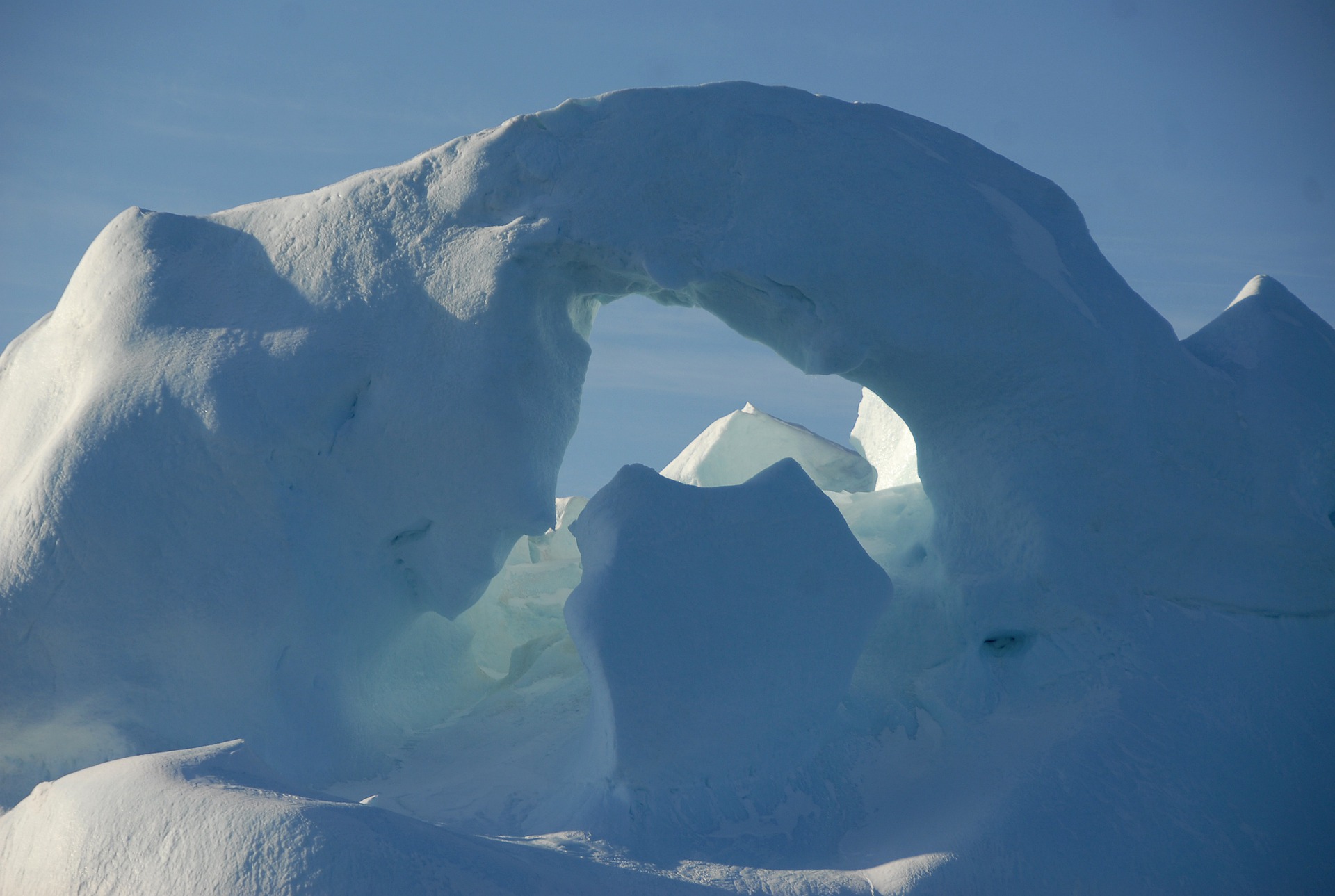
Ilulissat Icefjord
This incredible berg-strewn strip of shore in Disko Bay is where massive glaciers “calve,” a word indicating that icebergs break off from the glaciers and drift out into the coastal seas, making it justifiably Greenland’s most visited place and a UNESCO World Heritage Site since 2004. Unlike other ice-fjords in Greenland, this one allows onlookers to observe the show from dry ground, making it an ideal location if you happen to be there at the proper time.
Scoresby Sund
A sizable fjord system in the Greenland Sea, Scoresby Sound may be found on the eastern coast of Greenland. The main body is around 110 kilometers long and divides into a network of fjords that together span an area of over 38,000 square kilometers, giving it a tree-like form. The farthest fjords go inland by around 340-350 kilometers from their respective coastlines. The main basin is 400–600 meters deep, but several fjords reach depths of up to 1,450 meters. This fjord system is impressive in size and length. Ittoqqortoormiit is the sole permanent village in the area, and it is located on the northern side of the mouth of the Scoresby Sound. Sound was named after English explorer William Scoresby, who created the first detailed maps of the fjord region in 1822.
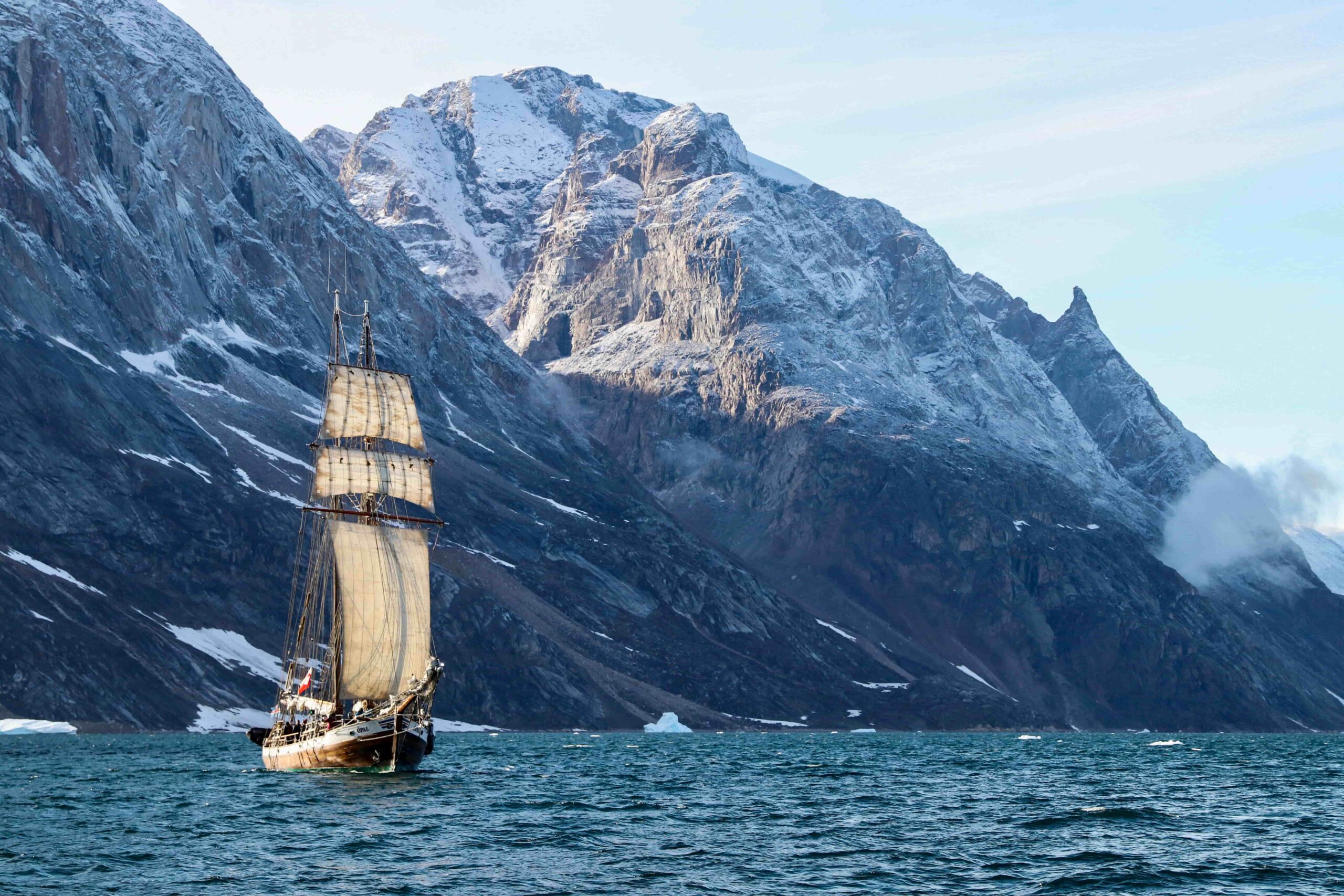

Northeast Greenland National Park
When it comes to protected terrain, Northeast Greenland National Park ranks ninth in size globally. Greenland’s interior and northeastern shore are protected by this park, which was established in 1974 and enlarged to its current extent in 1988. At 972,000 km2, it is larger than all but 29 of the world’s 195 nations. The only national park in Greenland, it was the first to be established in the Danish kingdom. The Arctic Circle’s northernmost national park. It is the second-largest second-level subdivision of any country in the world after Canada’s Qikiqtaaluk Region in terms of land size.
Uunartoq Hot Springs
While there are hot springs all around Greenland, the ones on the isolated island of Uunartoq are the ideal temperature for a relaxing soak. Three hot springs come together in this area, creating a tiny pool in which you may relax in the company of icebergs and beautiful mountain peaks.
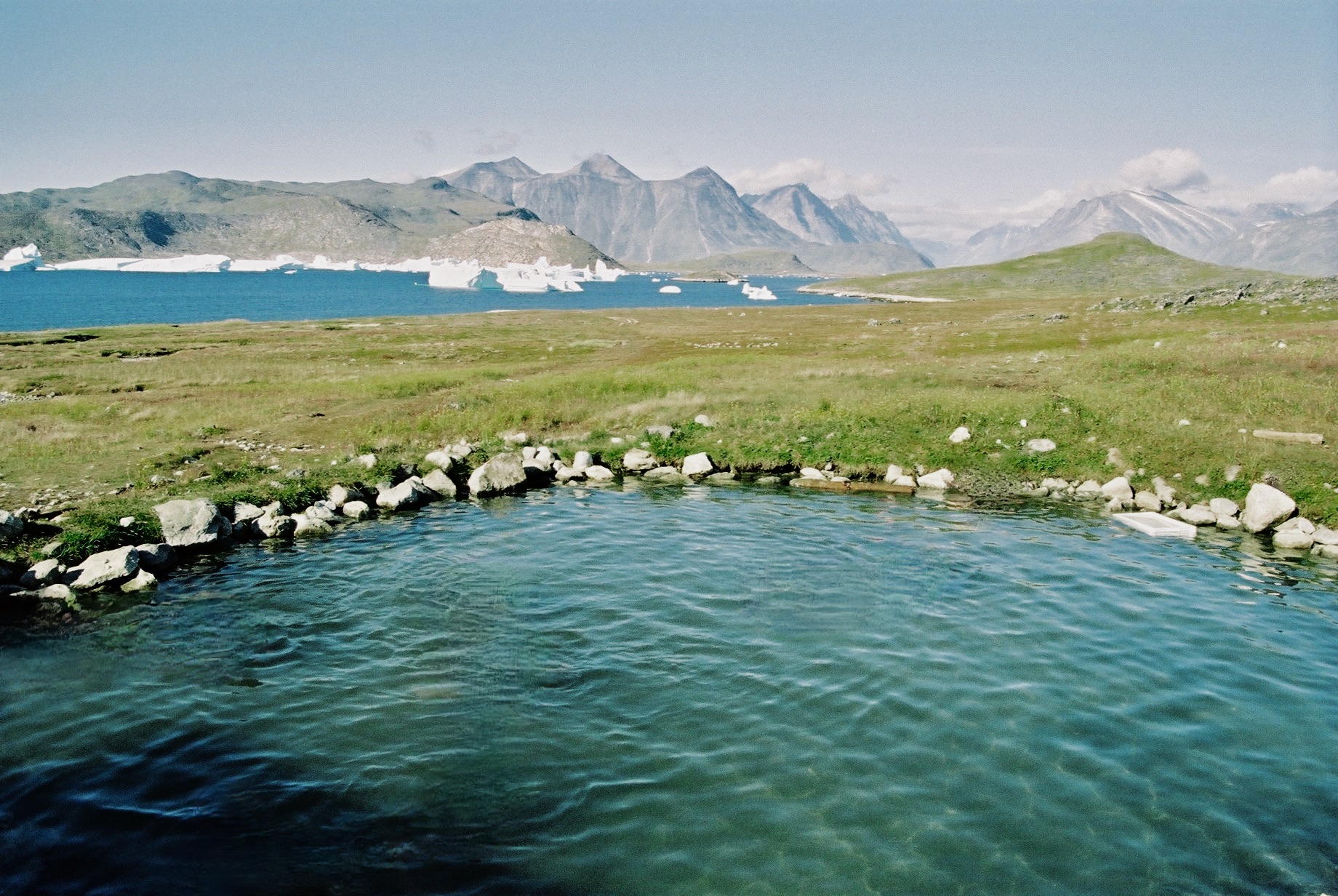

Viking Ruins
The ruins of the ancient Norse colony established by Eric the Red in southern Greenland are a major tourist attraction. The population of Norsemen in Greenland peaked at roughly 5,000 people. It is still unclear what caused the villages to disappear. Traveling to the locations of the ruins is like taking an interesting time machine back to the days of these intrepid hunters and gatherers. The Hvalsey Fjord Church, the oldest in Greenland and a must-see, is only one of numerous Viking remains in the area, along with Brattahlid, located just outside of Qassiarsuk (a 20-minute boat journey from Narsarsuaq International Airport).
9-day Itinerary in Greenland
Day 1
Arrive in Kangerlussuaq
Kangerlussuaq is Greenland’s main entry point. Very few visitors actually stop in this hamlet, despite the fact that it has all the makings of an excellent vacation spot. After arriving at the airport, you may check into your hotel, drop off your things, and head out to explore the neighborhood and, perhaps, try one of the airport’s renowned musk-ox burgers. But even if you’re not a fan of the concept, you should try the excellent food at Restaurant Roklubben.

- Backpacker:
- Budget:
- Mid-range:
- Luxury:
Old Camp
Polar lodge
When it becomes dark, a foreign city may be twice as dangerous - especially if you don't understand the language and are unfamiliar with the area. There is little reason to be alarmed about walking alone in the city since there low crime rate in Kangerlussuaq and some of the only crimes are pickpockets. You can walk safely at day, but be wary while walking at night and be alert in crowded areas or unlit alleys or streets. You can always take taxis, if you don't feel comfortable, Be wary of petty crime by taking precautions mentioned in the safety section above.
From the Airport to Kangerlussuaq' Center
Day 2
Exploring the Ice Cap
Free morning in Kangerlussuaq, and then, at around lunchtime, head out to the ice cap. You’ll go over the Arctic tundra with 4WD vehicles. There will be several chances to observe animals on your travels to the ice cap. The 4WD will bring you near to the ice cap, but you’ll have to go up the last hill to obtain the best views of the expansive frozen landscape. It’s true, it spreads hundreds of kilometers in every direction, and it’s the final vestige of the last ice age.
During your journey to the ice cap, where there is now no ice, keep an eye on the mountains to notice how the ice has shaped and rounded off their sharper points. Lakes formed when ice melts and rivers running on the ice itself are a once-in-a-lifetime opportunity.

Day 3
Off to Ilulissat
Ilulissat may be reached after a one-hour flight to the north. Ilulissat translates to “iceberg” in Greenlandic, and as you approach the city you will witness icebergs dotting the ocean floor. You can choose to stay at any hotel or hostel in Ilulissat.
Book an Ilulissat tour today to get the lowdown on your upcoming visit in the city, or maybe do it at your own if you prefer. After that, you’ll take a stroll through Ilulissat’s historic district to learn more about this important Greenlandic settlement. Pass through the home of Arctic explorer Knud Rasmussen, the Zion Church, and the historic harbor where local fisherman sell their daily catch on the “braettet” (the wood-board). You’re free for the remainder of the day to explore and take in this remarkable location.

- Backpacker:
- Budget:
- Mid-range:
- Luxury:
Hotel Arctic Ilulissat
Hotel Icefiord
When it becomes dark, a foreign city may be twice as dangerous - especially if you don't understand the language and are unfamiliar with the area. There is little reason to be alarmed about walking alone in the city since there's low crime rate in Ilulissat and some of the only crimes are pickpockets. You can walk safely at day, but be wary while walking at night and be alert in crowded areas or unlit alleys or streets.
From Kangerlussuaq to Ilulissat

Day 4
A UNESCO National Park Hike
Hike inside the Ilulissat Icefjord national park today after breakfast to discover remnants of ancient Inuit settlements and to enjoy breathtaking vistas of the Kangia Ice Fjord. More than 40-meter-tall icebergs are formed every day in this small strait, which receives 10% of the total ice flow from the inland ice. The Titanic was almost certainly sunk by an iceberg that originated in this fjord. Pack a lunch and continue your journey on one of the many beautiful paths in the region.
Day 5
Take an Ice fjord Cruise
Before embarking on your cruise, you can choose to pass the first part of the day as you choose, go for a stroll, or organize a tour that is accommodating to your timetable. After everything is done, you should make your way to the boat. You will leave Ilulissat at around 10 o’clock at night and go toward the ice fjord. You will be cruising around enormous icebergs for the next several hours as you take in the beautiful sights of the setting light bouncing off the ice. This of course is only possible during the summer months were the sun almost never sets.


Day 6
Head to Oqaatsut
You’ll spend the day traveling by boat to the nearby community of Oqaatsut. Oqaatsut is a little community with just 27 people living there currently. The Dutch whalers who worked in this region gave the region its original name, “Rodebay,” in honor of the bay where they captured their whales. Today, it is a quaint little community that boasts two restaurants, a hotel, and a hostel in addition to its overall appeal. Stroll around town after checking in and dropping your belongings. You will be spending the night in either choice of accommodation you prefer. If you’re on a tight schedule, you could take a flight and head back home instead of going to Oqaatsut.
Day 7
Exploring the Settlement
You will have time to relax, as you will have the day to yourself and will be able to take in the ambiance of the quaint little community. The peace and quiet of the surrounding environment provides a striking contrast to the frenetic pace of life in the rest of the world, and it makes for an ideal setting in which to relax with a good book or other activities. You do, nonetheless, have the opportunity to hire a kayak and go fishing if that is something that interests you.
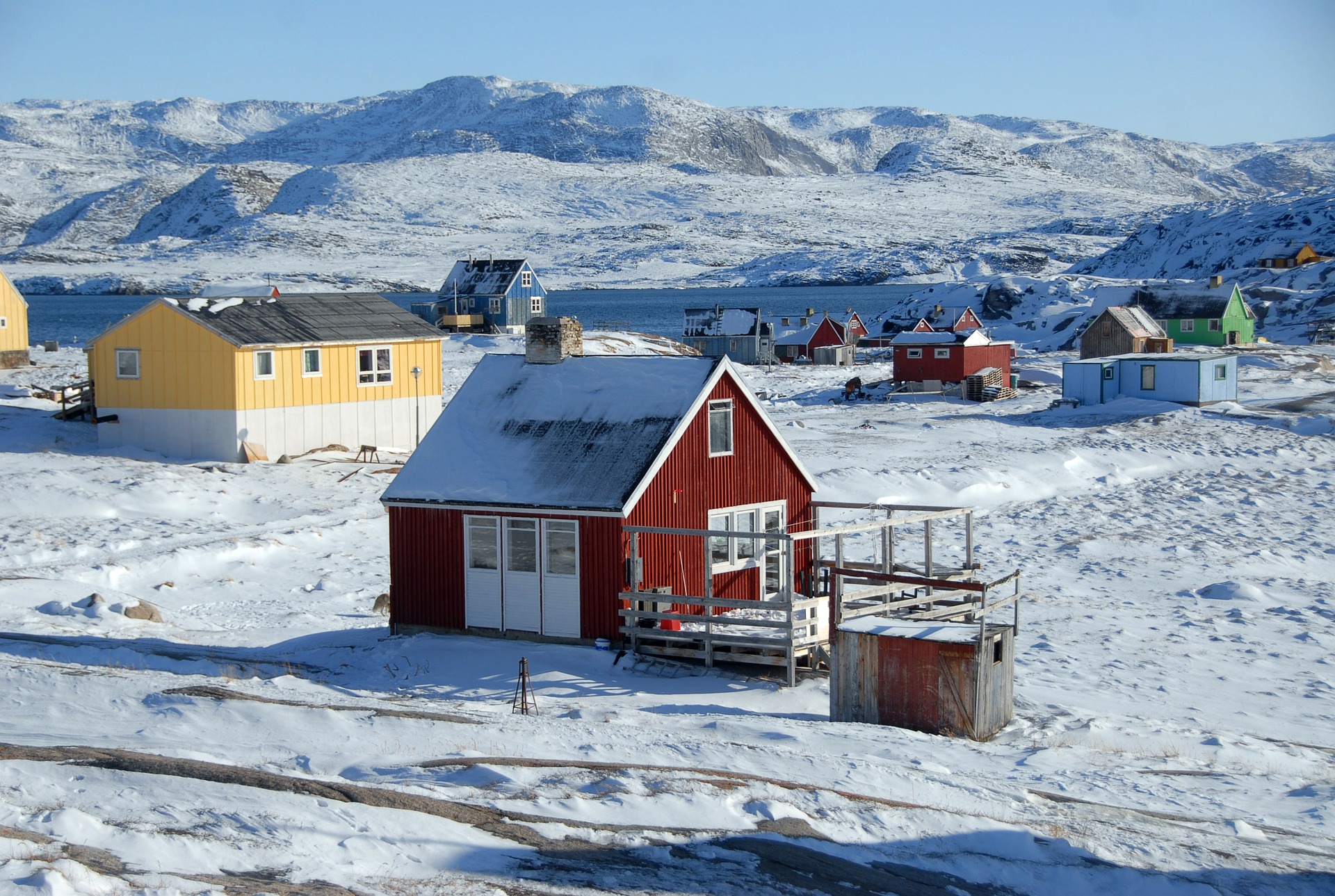

Day 8
Hike to Ilulissat
You go back on the trail and head back to Ilulissat, carrying a backpack and a map with you. The hike itself is around 23 kilometers long, and if you go at a leisurely pace, it will take you approximately 7-8 hours to complete it. You have the option of taking a cab to the airport, which from there, the remaining distance is only 17 kilometers. Cairns and orange dots are used to indicate the way along the trail. You will go through areas with a few tiny streams and will go past some of the area’s few summer homes as you travel through these areas. Also carry water with you at all times, since it’s a long hike.
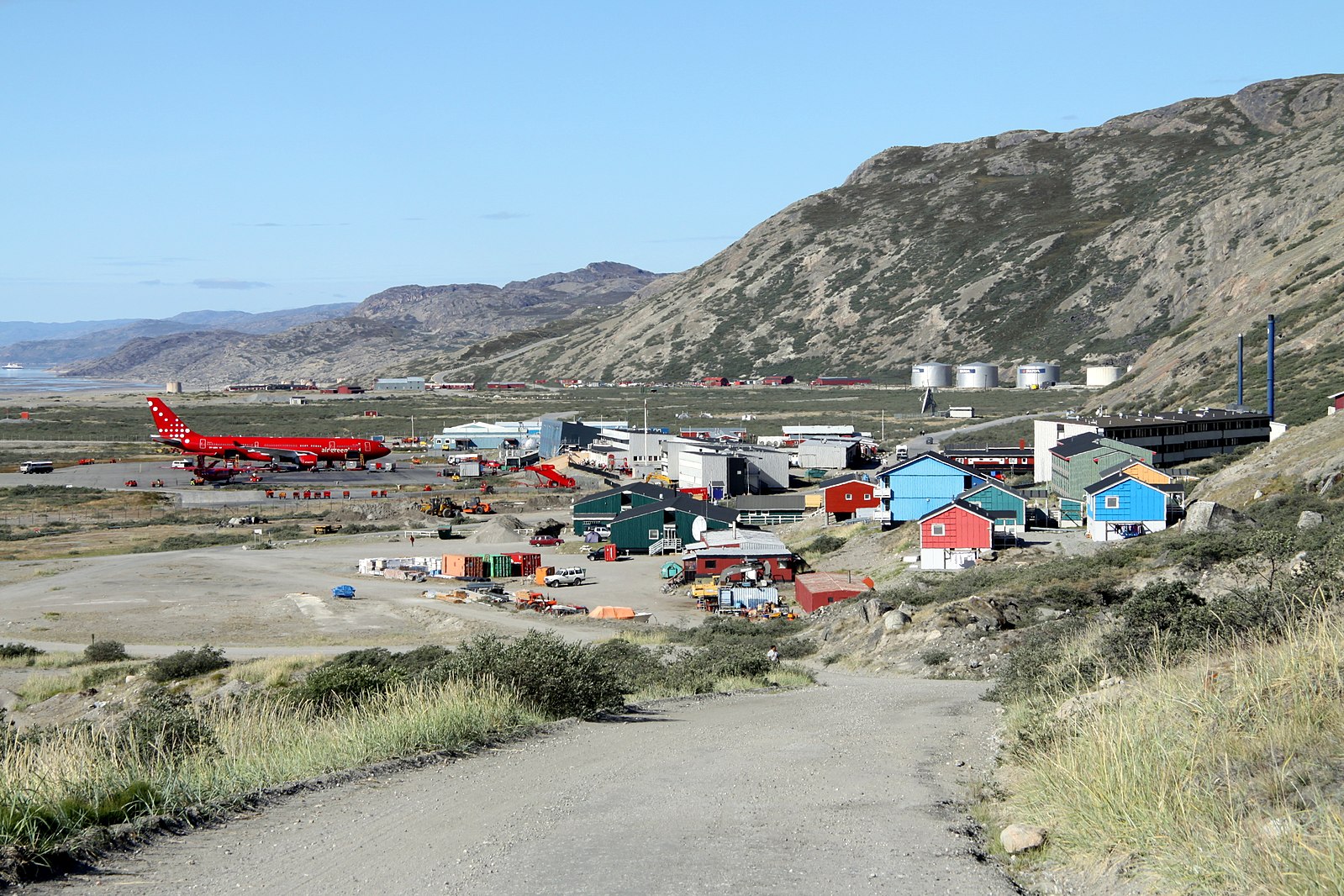
Day 9
Homebound
Unfortunately, your trip officially ends here. However, it always depends on you whether you want to shorten or stretch your trip further. Head to the airport to take the flight to Kangerlussuaq where all the international flights arrive, from there, take your flight back home.
The Most Popular Food in Greenland
Greenland’s culinary heritage is deeply rooted in the use of marine animals, birds, game, and fish meats in traditional dishes. Traditional foods typically have a considerable quantity of protein in their ingredients. After colonization and the emerging international trade, the cuisine has become more affected by the cuisines of the UK, the USA, and Canada. In restaurants around the major towns, specifically, has a variety of both traditional and international options, with locals embracing the summer months to go outdoor. Greenland’s bordering waters produce delicious fish and shellfish like no other place in the world, with the most popular being trout, salmon, cod, redfish, and Greenland halibut. Since they develop much slower than warm-water fish, the texture of the flesh becomes unique. Up until this day, locals go fishing and hunting for food. A variety of meat such as seal, reindeer, musk ox, lamb, fish, whale, and other seafood are the building blocks of Greenlandic cuisine.

Sava
The Sava or Greenlandic lamb is regarded as one of the greatest quality cuts of lamb in the world due to the clean and immaculate surroundings in which they are grown. Greenlandic lamb is almost completely raised free-range, and this is one of the reasons why. The southern portions of Greenland, specifically those areas outside the Arctic circle where green grass thrives, are the source of the vast majority of Greenland’s lamb meat, if not all of it.
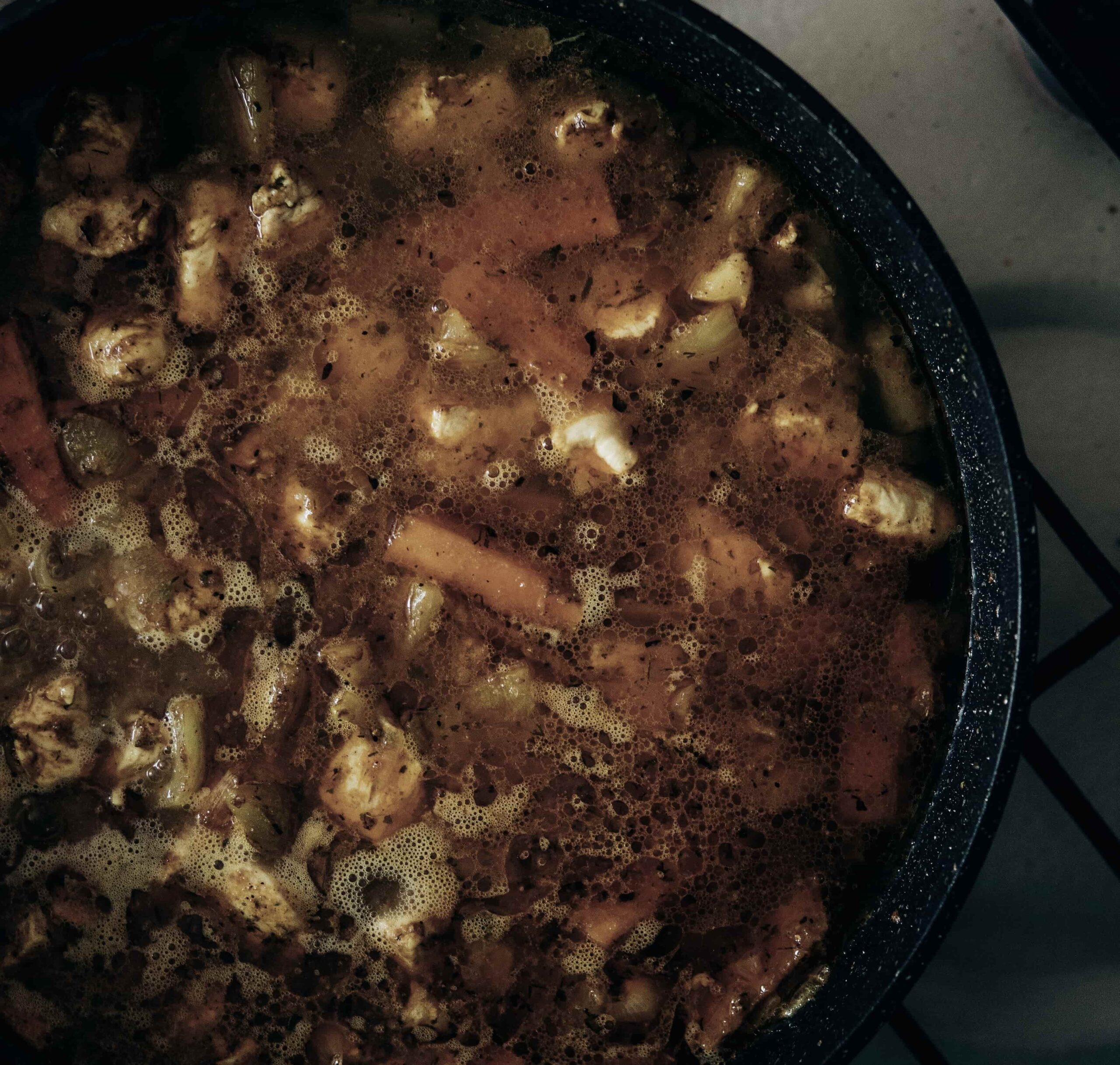
Suaasat
This meal is considered to be Greenland’s national dish. It is a classic soup that is typically prepared using whales, seals, reindeer, or seabirds as one of the main ingredients. In addition to it, it is seasoned with salt, pepper, and a bay leaf, and it contains potatoes and onions. Either rice or barley that has been soaked can be used to thicken it.
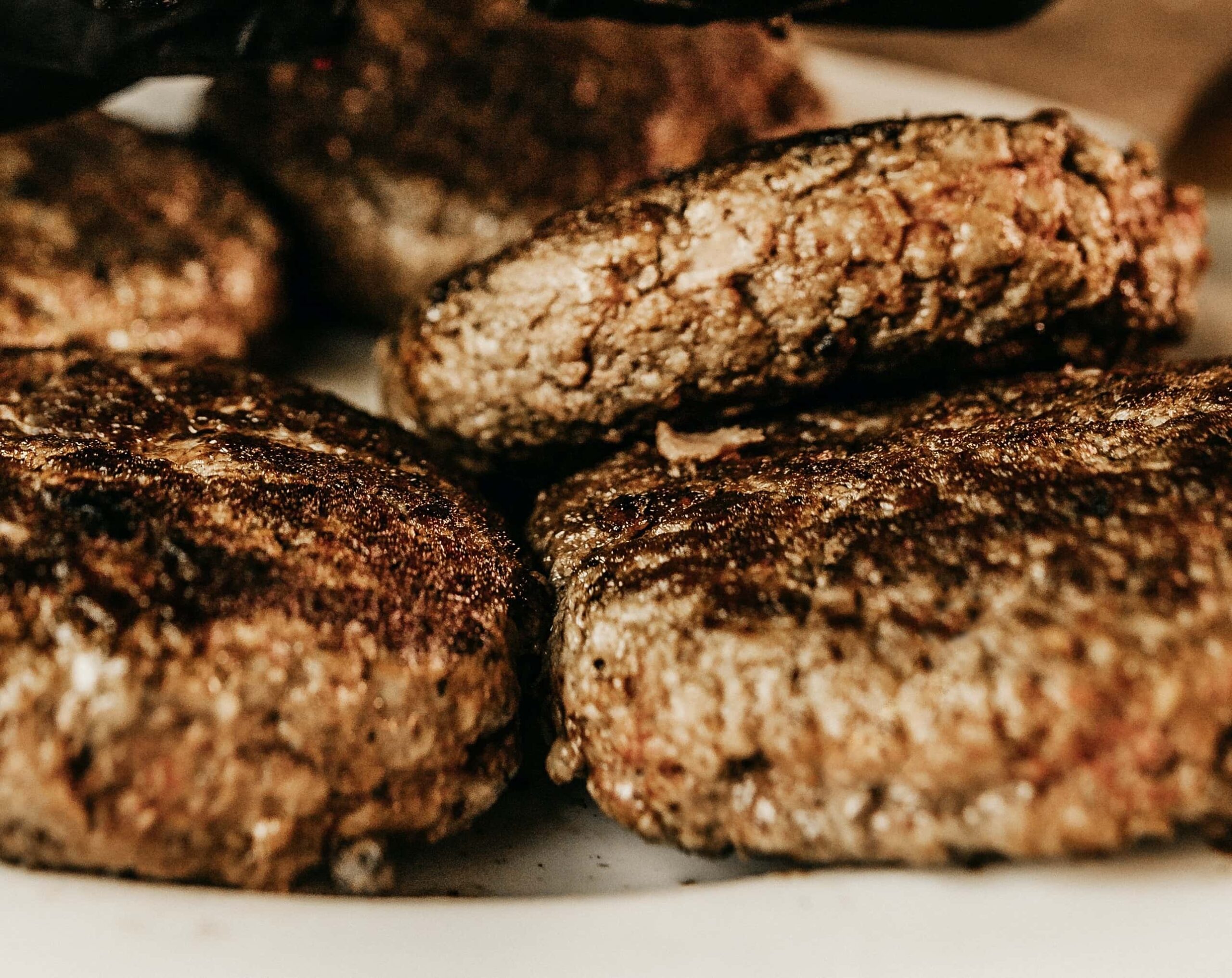
Umimmak
The musk ox is the biggest terrestrial animal in Greenland. They may weigh up to 400 kilograms (880 pounds) and can be found in herds in the Kangerlussuaq area of the nation. Coats, blankets, and other forms of artisan-crafted work can be made using the thick brown fur of musk ox. In restaurants, musk ox meat may be found prepared in a wide range of ways, ranging from steaks to soups; however, it is most commonly served raw in the form of a tartare. In Greenlandic, the word umimmak has a traditional meaning that translates to “the long-bearded one.”
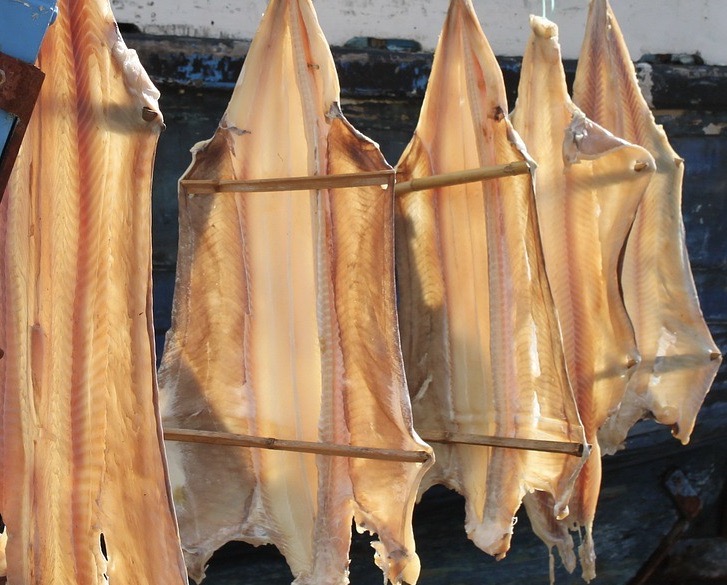
Saarullik Panertoq
Since there is a plentiful supply of cod in the Arctic, it is a staple ingredient in the cuisine of many Nordic nations. Cod is abundant in the icy waters that surround Greenland, and this fish is often filleted or smoked before being consumed. The most typical technique involves salting and drying the fish in order to make it survive for a longer period of time so that it may be consumed as a snack or utilized as a basic component in soups and other regional recipes. Plan your trip during the summer months so you may participate in the cod fishing season.

Arfivik
The Bowhead whale is the star ingredient in this well-known recipe. Smoke is used to prepare the whale flesh, which is then served with onions and potatoes.
What's the Travel Budget for Greenland
Flights
- Flights start at roughly $520 from nearby countries. Tickets however on average cost around $1,100 and can cost way more depending on which class and from which country you depart from.
Accommodation
- Nomad Backpacking style travelers can expect to spend around $500 for a week
- Budget travelers can expect to spend around $700 for a week
- Mid-range travelers can expect to spend around $950 for a week
- Luxury travelers can expect to spend around $1,500 for a week
Food Budget (Three meals and drinks)
- Nomad Backpacking style travelers can expect to spend around $25 per person per day
- Budget travelers can expect to pay around $35 per person per day
- Mid-range travelers on average would cost $35 to $44 per person per day
- Luxury travelers can expect to pay around $80 to $120 per person per day
Overall Budget Styles (Not including Flights, Tours, Transportation, or Car Rental)
- Nomad Backpacking style travelers can expect to spend roughly $1,400 for a week
- Budget travelers can expect to spend close to $1,700 for one person for a week
- Mid-range travelers can expect to spend approximately $2,100 for one person for a week
- Luxury travelers can expect to spend around $3,050 for one person for a wee
Flights
- Flights start at roughly $520 from nearby countries. Tickets however on average cost around $1,100 and can cost way more depending on which class and from which country you depart from.
Accommodation
- Nomad Backpacking style travelers can expect to spend around $500 for a week
- Budget travelers can expect to spend around $700 for a week
- Mid-range travelers can expect to spend around $950 for a week
- Luxury travelers can expect to spend around $1,500 for a week
Food Budget (Three meals and drinks)
- Nomad Backpacking style travelers can expect to spend around $25 per person per day
- Budget travelers can expect to pay around $35 per person per day
- Mid-range travelers on average would cost $35 to $44 per person per day
- Luxury travelers can expect to pay around $80 to $120 per person per day
Overall Budget Styles (Not including Flights, Tours, Transportation, or Car Rental)
- Nomad Backpacking style travelers can expect to spend roughly $1,400 for a week
- Budget travelers can expect to spend close to $1,700 for one person for a week
- Mid-range travelers can expect to spend approximately $2,100 for one person for a week
- Luxury travelers can expect to spend around $3,050 for one person for a wee
Flights
- Flights start at roughly $520 from nearby countries. Tickets however on average cost around $1,100 and can cost way more depending on which class and from which country you depart from.
Accommodation
- Nomad Backpacking style travelers can expect to spend around $500 for a week
- Budget travelers can expect to spend around $700 for a week
- Mid-range travelers can expect to spend around $950 for a week
- Luxury travelers can expect to spend around $1,500 for a week
Food Budget (Three meals and drinks)
- Nomad Backpacking style travelers can expect to spend around $25 per person per day
- Budget travelers can expect to pay around $35 per person per day
- Mid-range travelers on average would cost $35 to $44 per person per day
- Luxury travelers can expect to pay around $80 to $120 per person per day
Overall Budget Styles (Not including Flights, Tours, Transportation, or Car Rental)
- Nomad Backpacking style travelers can expect to spend roughly $1,400 for a week
- Budget travelers can expect to spend close to $1,700 for one person for a week
- Mid-range travelers can expect to spend approximately $2,100 for one person for a week
- Luxury travelers can expect to spend around $3,050 for one person for a wee
Flights
- Flights start at roughly $520 from nearby countries. Tickets however on average cost around $1,100 and can cost way more depending on which class and from which country you depart from.
Accommodation
- Nomad Backpacking style travelers can expect to spend around $500 for a week
- Budget travelers can expect to spend around $700 for a week
- Mid-range travelers can expect to spend around $950 for a week
- Luxury travelers can expect to spend around $1,500 for a week
Food Budget (Three meals and drinks)
- Nomad Backpacking style travelers can expect to spend around $25 per person per day
- Budget travelers can expect to pay around $35 per person per day
- Mid-range travelers on average would cost $35 to $44 per person per day
- Luxury travelers can expect to pay around $80 to $120 per person per day
Overall Budget Styles (Not including Flights, Tours, Transportation, or Car Rental)
- Nomad Backpacking style travelers can expect to spend roughly $1,400 for a week
- Budget travelers can expect to spend close to $1,700 for one person for a week
- Mid-range travelers can expect to spend approximately $2,100 for one person for a week
- Luxury travelers can expect to spend around $3,050 for one person for a wee
If you want to know what to pack, read this list below:
- This is a casual European country with cold weather that tends to get cold in the summer and freezing in the winter, dress accordingly
- Raincoat or Light Waterproof Jacket
- Hiking Boots or Sturdy Sneakers (Shoes You Don’t Mind Getting Wet)
- Sunscreen
- Insect Protection – Repellent and Clothing
- Sunglasses and Sun Hat
- Water Shoes
- Beach Towels/Sarong
- Dry Bag
- Money Belt or Cross Bag
- Portable Medical Kit
- Flashlight or Headlamp
- Copies of your passport.
- Get all the needed vaccinations before traveling
- A power bank is a must in any travel.
- Always have some cash with you just in case there are no ATMs and if you are dealing with a business that solely accepts cash
- Get yourself an adapter for your gadgets
- 1 toothbrush
- 1 tube of toothpaste
- 1 razor
- 1 package of dental floss
- 1 small bottle of shampoo
- 1 small bottle of shower gel
- 1 towel
- Deodorant
- Band-Aids
- Hydrocortisone cream
- Antibacterial cream
- Earplugs
- Tylenol
- Hand sanitizer (germs = sick = bad holiday)
- A key or combination lock
- Zip-lock bags
- Plastic bags (great for laundry)
- Universal charger/adaptor
- LifeStraw (A water bottle with a purifier)
- 1 dry shampoo spray & talc powder
- 1 hairbrush
- Makeup you use
- Hairbands & hair clips
- Feminine hygiene products
Clothing For Boys
- 1 pair of jeans or khaki pants
- 1 pair of shorts
- 1 bathing suit
- 5 T-shirts
- 1 long-sleeved T-shirt
- 1 pair of flip-flops
- 1 pair of sneakers
- 6 pairs of socks
- 5 pairs of boxer shorts
Clothing For Girls
- 1 swimsuit
- 1 sarong
- 1 pair of stretchy jeans
- 1 pair of leggings
- 2-3 long-sleeve tops
- 2-3 T-shirts
- 3-4 spaghetti tops
- 1 light cardigan
Want to plan your own trip, here are some of the best resources that can help you
- Skyscanner – They search small websites and budget airlines that larger search sites tend to miss. They are hands down the number one place to start.
- Momondo – This is another favorite flight search engine because they search such a wide variety of sites and airlines. Always check here too.
- Booking.com – The best all-around booking site that constantly provides the most affordable and lowest rates. They have the widest selection of budget accommodation.
- Couchsurfing – This website allows you to stay on people’s couches or spare rooms for free. It’s a great way to save money while meeting locals who can tell you the ins and outs of their city. The site also lists events you can attend to meet people (even if you’re not staying with someone).
- Intrepid Travel – If you want to do group tours, go with Intrepid. They offer good small group tours that use local operators and leave a small environmental footprint.
- Grassroots Volunteering – For volunteering, Grassroots Volunteering compiles a list of good local volunteer organizations that keep the money within the community.
- Get Your Guide – Get Your Guide is a huge online marketplace for tours and excursions. They have tons of tour options available in cities all around the world, including everything from cooking classes, walking tours, street art lessons, and more! It has the world’s largest collection of things to do with more than 30,000 activities in 7500 destinations.
- SafetyWing – Safety Wing offers convenient and affordable plans tailored to digital nomads and long-term travelers. They have cheap monthly plans, great customer service, and an easy-to-use claims process that makes it perfect for those on the road.
- Trip Advisor: Check the reviews and then book your accommodation. TripAdvisor is where you go when you want to compare prices with multiple accommodation providers.
- VRBO: is the main search engine to use when you are looking for a home or apartment rental. It can sometimes be cheaper than hotels and it is the best way to stay in areas that offer a more local feel.
- Hostelworld: With one of the largest databases of hostels in the world, Hostelworld is the go-to site when you are looking for budget accommodation.
- Rome 2 Rio: If you want to see how to get somewhere by plane, train, bus, ferry, or car Rome2Rio lays it all out for you as well as related costs.
- World Nomads Insurance: When traveling you should always have travel insurance. We have found the best bang for your buck is by far World Nomads.
Final Thoughts on Greenland
Greenland is appealing for many reasons: its rich history and culture, which can be seen in its traditional buildings and rural landscapes, its unusual and beautiful landmarks, many of which are listed on the UNESCO World Heritage Sites list, its unbelievable warmth despite the freezing weather, its exciting events and festivities, and its vivid picture-perfect surroundings of highlands and pristine waters, ideal for whale watching and watching the fjords. Evidence suggests that Greenland’s history extends back much further than 2,500 BC when it was first documented. A piece of a fallen Viking civilization and a meeting point for a number of different cultures; one of the top travel destinations. With its stunning scenery, wide variety of wildlife, and intriguing historical sites, Greenland is quickly becoming a popular tourist destination, especially for its out-of-the-world activities that include watching the Northern Lights or witnessing the never-setting sun. Are you planning on going on a trip to Greece?
Have you ever been to Greenland? Post your thoughts, questions, and concerns down below.